

Looking to understand the difference between acquisition and activation?
The two words might sound similar, but their meanings are very different.
So, if you're assigning the same team within your company to monitor both of these, you're missing out on some very real revenue growth.
In this article, we'll attempt to clear up the confusion between these two terms.
We'll also give you some tips for how you can both acquire more users and increase the proportion of those who end up activating.
Let's get right into it.
User Acquisition
User acquisition is the process of acquiring new users for your business.
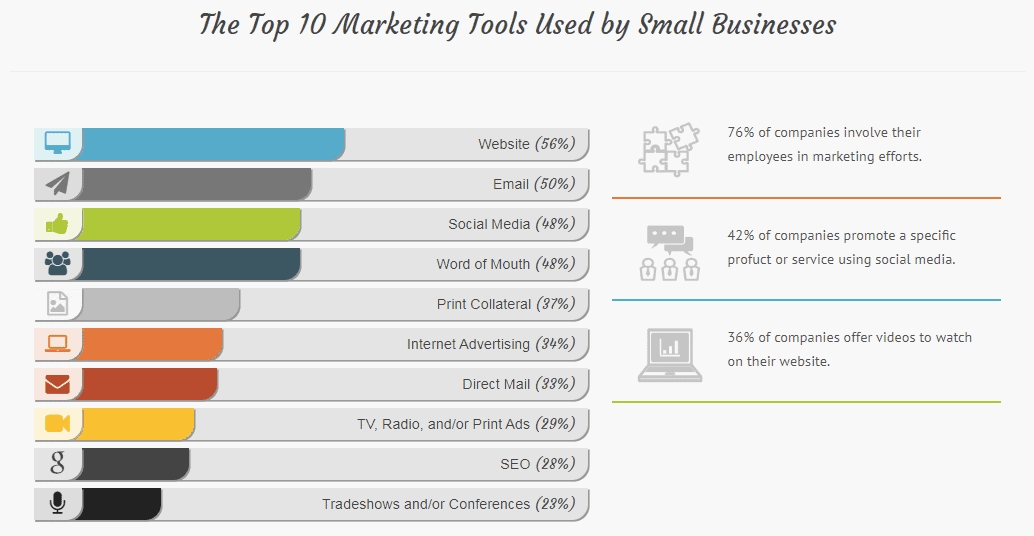
Those users may or may not become paying customers straightaway. In the age of product marketing, it's increasingly common for companies to acquire free trial users, and then subsequently convert those trial users into paying customers.
The process of user acquisition is a strategic blend of sales and marketing activities that varies from company to company. A user typically goes through three stages in the acquisition part of their customer journey:
- They become aware of your product or service, perhaps through a marketing campaign or a recommendation in their network.
- They start to consider the possibility of purchasing from you as a way to solve a problem that they have. In this stage, they're likely to compare your solution to competitors.
- They purchase from you.
Companies use all sorts of different strategies to acquire new users. An exhaustive discussion of all of these is beyond the scope of this article, but here are just a few of them:
- Content marketing
- Social media marketing
- Search engine marketing (SEM)
- Pay-per-click (PPC) marketing
- Search engine optimization (SEO)
- Email marketing
- Affiliate marketing
- Product marketing
- Conversion rate optimization (CRO)
- Webinars
- Sales demos
Ultimately, the purpose of all user acquisition is to drive revenue. In this sense, it's the lifeblood of any business.
Metrics to track user acquisition
Note: there's a temptation for companies to track too many metrics at once and get lost in data. If you're overwhelmed, it's better to take one of these and track it consistently than it is to try to track all five at once!
On-site conversion rate
Your conversion rate is a measurement of how persuasive your offer is together with how targeted your traffic is.
You can think of conversion rate as the percentage of visitors to a particular landing page or blog post that purchase from that page.
For example, if a particular landing page on your site has 1000 unique visitors a month and 9 of those convert into buyers, your conversion rate would be 0.9%.
Customer acquisition cost (CAC)
CAC is a measurement of how affordable it is for your company to acquire a new customer.
To calculate CAC over a given period, simply sum your marketing and sales costs over that period and divide by the number of customers acquired.
For example, if your marketing cost $10k in the month of February and your sales $14k, and you acquired 24 customers in February, your CAC would be $1k per customer.
Compare that against the amount of profit you can expect to generate from an average customer and you'll have a very good idea of whether your business model is profitable or not.
Click-through rate (CTR)
CTR is often used in PPC marketing as a measurement of the effectiveness of your ad copy and ad creative.
You can think of it as the percentage of people who view your ad who "click through" to your website.
Let's say you're running a Facebook ad that leads to a particular landing page on your site. In one month, 50,000 people view the ad. Of those, 1,000 click on the ad and get taken to your landing page.
In this instance, we would say that the CTR is 2%.
Sales cycle length
In my experience, this is an underappreciated one.
The sales cycle is the length of time that it takes for a customer to go from initially discovering your business to buying from you.
Small businesses and B2C sales tend to have one or two decision-makers, which leads to faster sales.
By contrast, enterprise sales can regularly take a year or more! That's a lot of marketing that needs to be done to nurture those leads before they close…

Sales cycles also tend to be longer for purchases that are expensive relative to the wealth of the buyer. For example, a couple will typically spend more time considering which house to buy than they will over where to go for dinner on Friday night.
Different lengths of sales cycle lend themselves to different customer acquisition tactics. For example, stressing scarcity is likely to work better in a shorter, transactional sale, whereas an enterprise deal requires a huge amount of trust to be built up over time.
Return on ad spend (ROAS)
This one measures the profitability of the money you spend on PPC marketing.
Let's say you spend $5k on Google Ads in a given month and bring in $30k of revenue.
Your ROAS here is 6, sometimes written as 600%.
Sounds like a massive number, but consider that your revenue also has to pay for COGS, marketing costs and any employees that you have!
How can you improve user acquisition?
There are a vast number of things you can try to improve your user acquisition process. Here's a selection of the most impactful ones.
Improve CRO
To improve your conversion rate:
- Add more CTAs to the page, especially above the fold and at the end of the page
- Add social proof elements, such as trust badges or testimonials, again especially above the fold
- Summarize the benefits of what you're selling in bullet points so that they're easy to scan
- Remove friction from your sales process, such as by reducing the length of your checkout process
- Speed up your website
Improve your copy
You can do this by:
- Keeping sentences and paragraphs short to maximize readability
- Speaking to the benefits of what you're selling, not the features
- Using the word "you" frequently and look at the situation from your customer's perspective
- A/B testing different types of ad copy to see what performs best
- Eliminating fluffy language that doesn't add value
Improve targeting
By targeting, I mean how well what you're marketing and selling matches the exact needs of your customers.
You can improve this by speaking regularly to customers and focusing the conversation on their needs, not on your solution.
As you come to understand their needs more deeply, you can convert your insights into user personas who accurately represent particular types of buyers.
Don't always go for the sale immediately
There's a certain type of buyer who's looking to spend money, already knows about their problem and your solution, and already has their wallet in hand when they're on your site.
This is great, but not every buyer is like that. Many of them need more time to get to know you and understand your solution better.
For this second type of customer, it's futile to bombard them with sales CTAs. Instead, try to get their email, get them to sign up for your newsletter and nurture them with helpful content until they're ready to buy.
Increase your budget
If your sales and marketing is already working well and your user acquisition metrics outpace the benchmarks for your industry, the best thing you can do is to throw more money at the problem.
You've found a system that works; it's just a question of scaling it. This becomes more of an issue of management and operations than one of sales or marketing.
Disclaimer: don't ignore retention!
In my experience, early-stage founders often think that the only way to increase the number of users on their platform is to acquire more of them.
Don't forget that it's extremely important to retain the users you currently have, not just acquire new ones.
In a B2B context, it's also very often the case that you can upsell to existing customers.
And one of the best ways that you can retain customers is by ensuring that they activate!
User Activation
A user is said to activate when they derive value from using your product for the first time.
Here are some examples of what that looks like.
Let's say you're a project manager using Asana. You go through their product tour and you begin to realize the multitude of ways in which it can save you and your team time by keeping you better organized.
You become activated at the point that you create your first project board and begin to populate it with tasks for your team.
Alternatively, if you were using Pipedrive to manage your sales cycle, you'd activate when you set up your first sales pipeline and populate it with deals.
Facebook has said that they consider a user activated once they've set up an account and added 5 friends.
And if you use DocuSign, you activate it when you send your first contract over to someone for them to sign it.
User activation is not to be confused with the Aha Moment. This is when a user first perceives that they could potentially derive value from your product. It's more hypothetical and less concrete than activation.
Metrics to track activation
You can calculate activation rate by taking the percentage of your total users (including free ones) who end up activating.
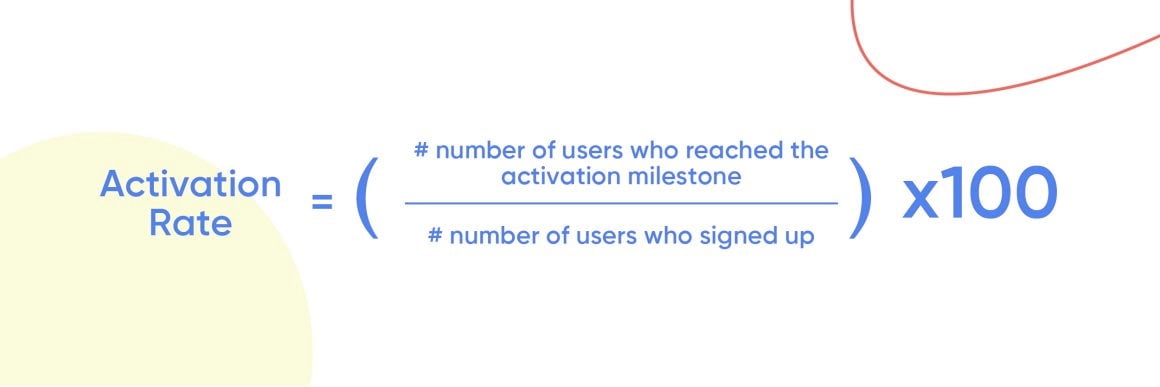
To do this, you'll need to develop a quantifiable, unambiguous definition of what constitutes "activated" for your users. Generally, this will be a step in your onboarding process which, once taken, means that a user has activated.
Let's say that you have 500 users in the month of May. You decide that installing your product widget means that a user has activated. 50 of your users install the widget that month. It follows that your activation rate was 10%.
This is by far the most precise metric to use to gauge the success of your activation. But some other metrics that are correlated with activation are:
- Aha moment completion rate: the percentage of total users who reach the Aha moment
- Onboarding completion rate: the percentage of total users who finish your user onboarding, or perhaps your product tour
- Trial-to-paid conversion rate: the percentage of trial users that end up buying from you
In each of these cases, these metrics indicate users moving from being mildly interested in your product towards experiencing tangible value and becoming paying customers.
How can you improve user activation?
Users frequently fail to activate because they don't understand how to get value out of your product. This often results in churn, which is the last thing you want.
It follows that you can increase your activation rate by educating your users on how to get value from your product.
This process of customer education is synonymous with user onboarding. Here are some examples of how you can onboard your users:
You can use a welcome screen to greet new users, make them feel at home, segment them by Jobs to Be Done and nudge them in the direction of your product tour:
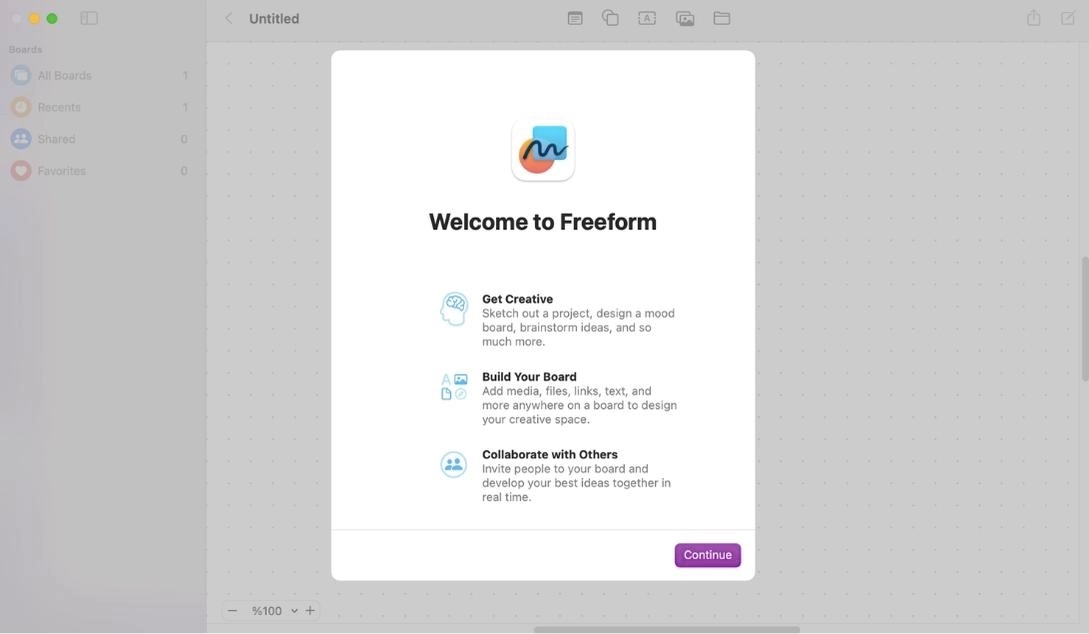
Product tours often contain checklists that correspond to the key actions users need to take in order to activate:
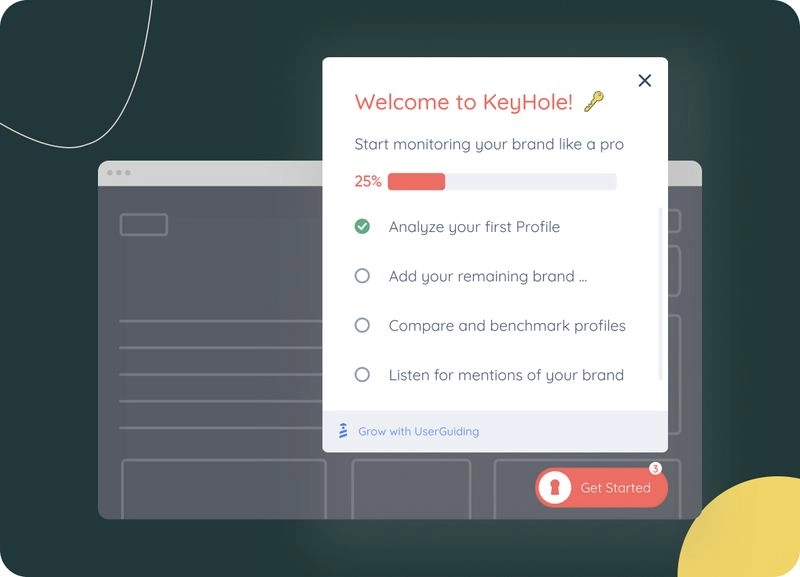
Tooltips and hotspots can be used to highlight key features and make them more intuitive for your customers:
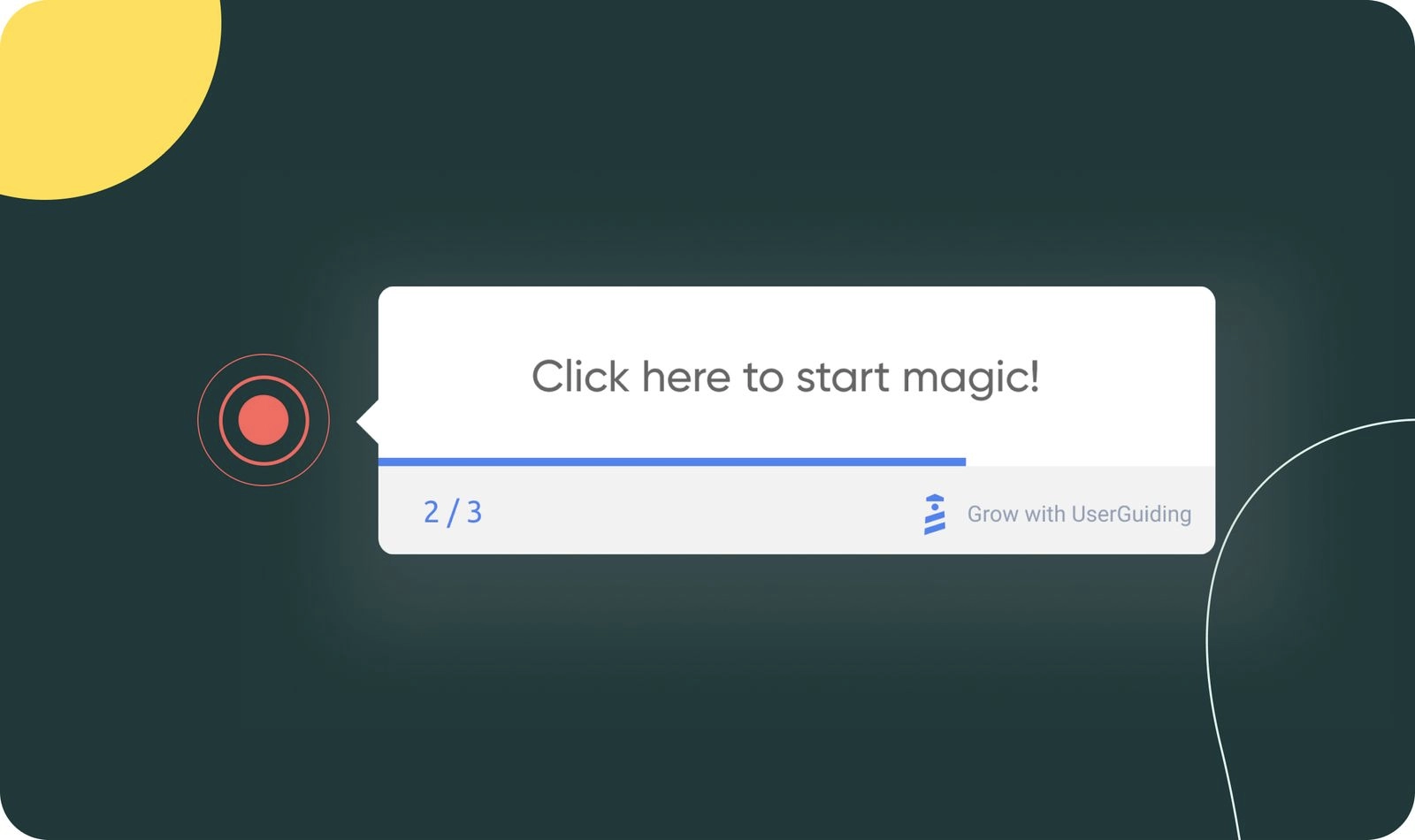
And you can also create a resource center so that customers can answer their own questions about your product without the friction of reaching out to a support agent:
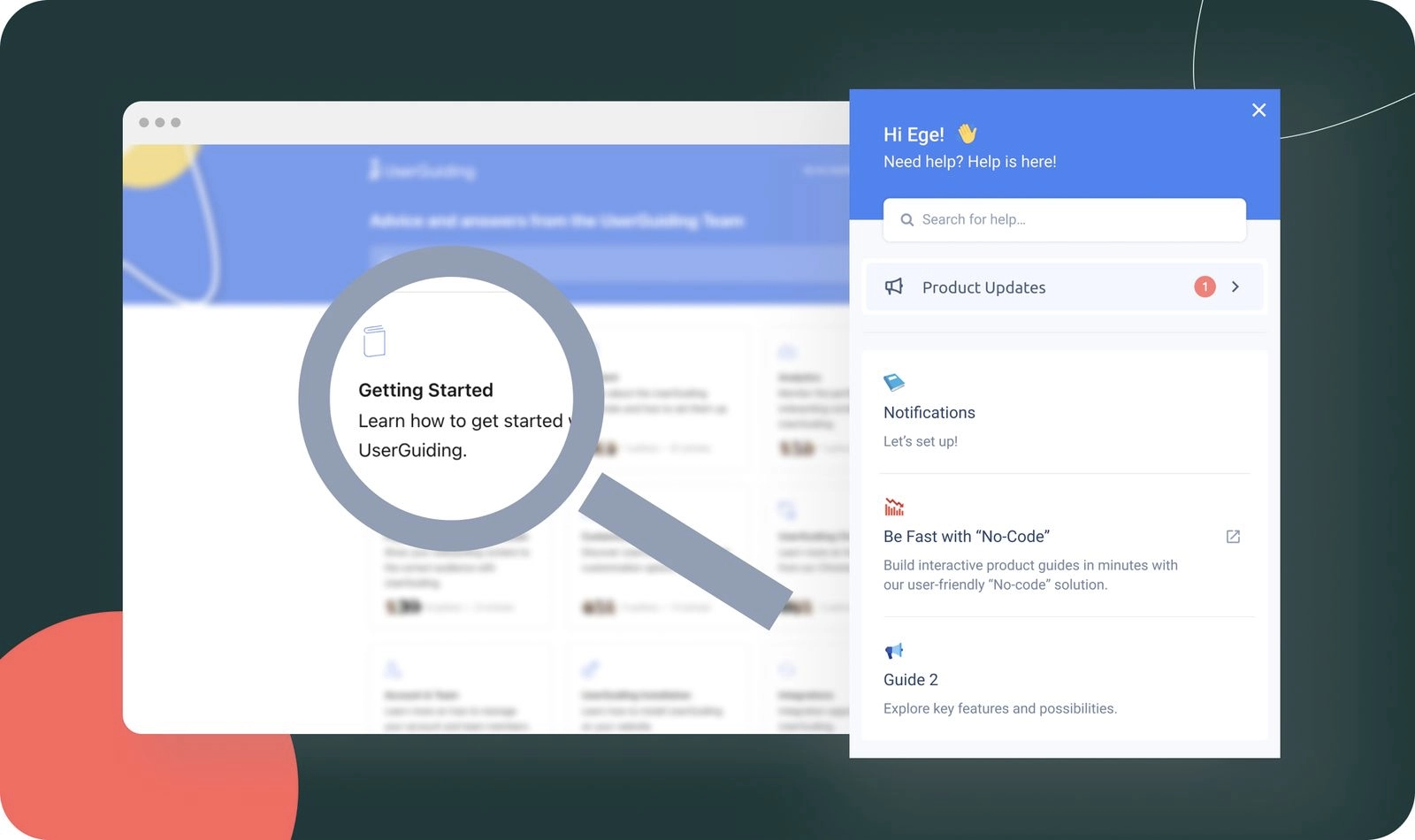
Our product, UserGuiding, will let you build all of these onboarding UX elements as an overlay to your product, without having to use code.
You can try it out for free here.
User Activation vs Acquisition - key differences and similarities
Here is a table that summarizes the key differences and similarities between the two terms we've been discussing in this article:

To explain this a little further:
- Dave McClure came up with the idea of pirate metrics, and they have subsequently become popular in the SaaS world. The metrics are Awareness, Acquisition, Activation, Retention, Revenue, Referral. They're called pirate metrics because the first letters of their names spell out AAARRR.
- User acquisition only results in a paying customer if a trial user converts into a paying one after being acquired. If a user experiences value through their trial and becomes activated, the chances of that user becoming a paying customer are high.
- Activation is something that happens at a later point in the buyer's journey than acquisition. Put another way: not all those users who are acquired end up activating. You can increase the odds of activation with good user onboarding.
- In the freemium model that's currently popular in the SaaS world, marketing acquires leads and drives them to sign up to become free trial users. The product team then aims to get them to activate through an excellent product experience. Sales demos are a useful tool right at the bottom of the funnel, at the point when the customer is about to buy.
Wrapping up
Having read this article, you should now understand the differences between user acquisition and user activation, and how to effectively optimize both in a way that maximizes growth.
If you're looking for an intuitive, affordable way to boost your user activation rate, consider giving UserGuiding a try.
It will allow even your non-technical product people to build onboarding elements like checklists in a matter of minutes, without having to code.
Don't believe me? Check it out and see for yourself!

















.svg)
.svg)
.svg)
.svg)
.svg)

.svg)
.svg)












.svg)
.svg)




.png)



















